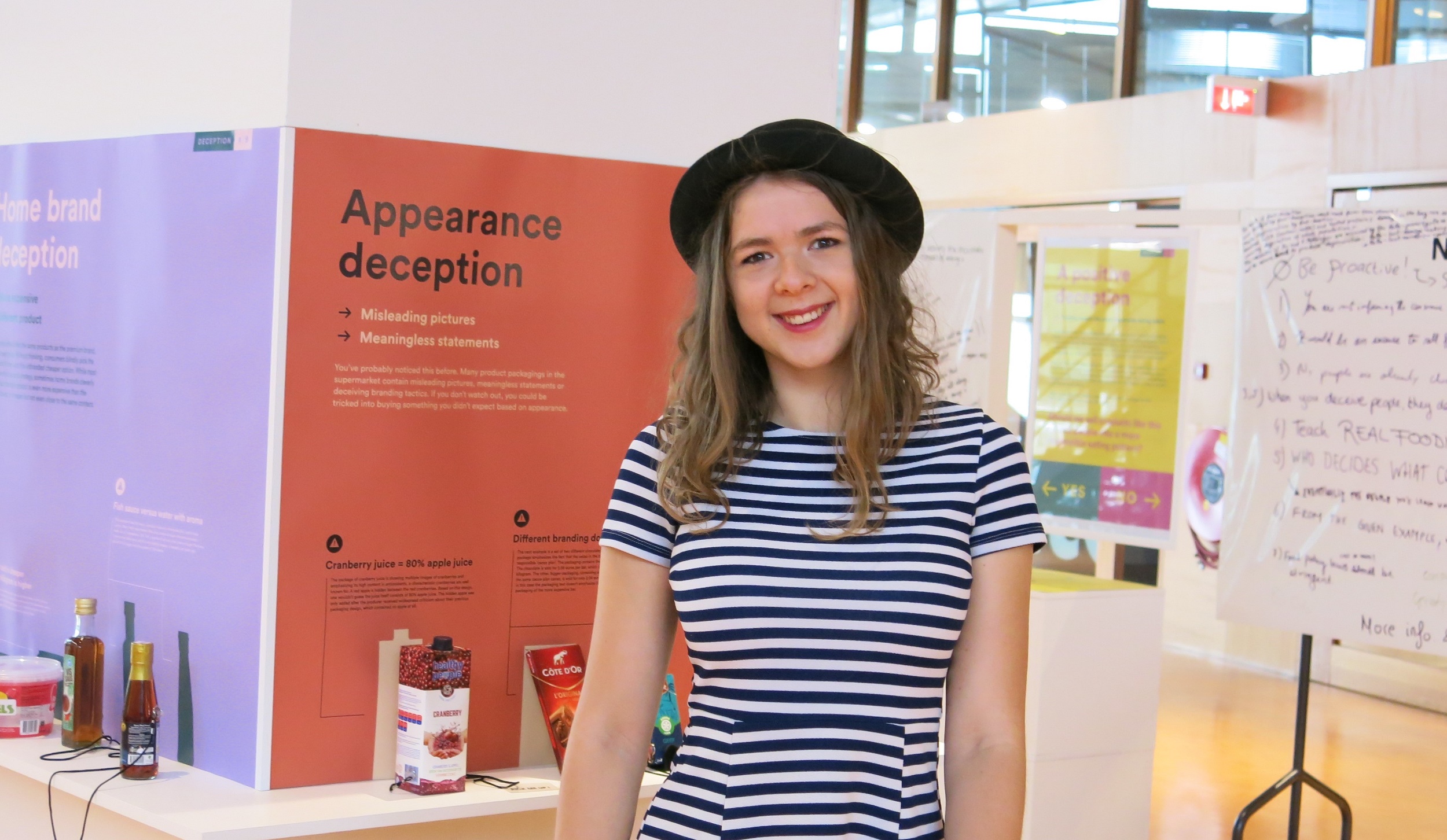Do you know what’s in that packaged food you’re eating? Master’s student Charlotte de Wit thinks you might be surprised.
(Photo: Heather Montague)
Product packaging can be deceiving and may influence people to make poor food choices. But what if you deceive people to do good? With an exhibit called What do we eat? at the TU Delft Library, Charlotte de Wit proposes the same tricks can be used to make people eat more responsibly without making the conscious choice to do so.
“I’m doing a master’s in integrated product design at the Industrial Design Faculty. I did a bachelor’s in mechanical engineering, but I’m quite a creative person so I felt like I needed to switch and now I’m really glad I did. I joined the honours programme and as part of that you write a project proposal about something you would like to do. I thought about something with trying to get people to eat less meat by making a deceptive meat product that actually only contains 10% meat, while people think they are buying ‘normal meat’. Doing some research into the rules and regulations, I discovered there’s an ethical issue, and there’s already a lot of deceptive information about products. It really brings you to the edge of what’s possible and what’s ethical and I find that very interesting.
I really wanted to do the exhibition because I felt I couldn’t answer the ethical questions, but I can ask the public what they think. I contacted the TU Delft Library and they said they had never worked together with students on something like this, so I was really happy to get this platform to share my project. The exhibition was originally from 5 June to 8 July, but now it seems to be very popular so it will continue through the summer.
‘It’s not only about what is healthy’
A few years before I started this project, I was already creating something about the deceptions in food packaging, trying to photoshop a package in a more honest way. Something that says it’s wholegrain, I would change to say this is 20% white flour and a lot of sugar. It was just something I did for fun with a few products. So, with an interest that was already there I came up with this project.
All my life I’ve been interested in food, reading labels about ingredients, so I was not shocked by most of what I learned preparing for the exhibit. But look at something like baby food which has 30% sugars, and on the front of the package says something like ‘all the nutrition you need with added vitamins’ and then it has a huge amount of sugar. So, from six months old it’s training kids to adjust to that taste.
I like being at the intersection of art and food and science. Most food research is about using big groups and trying to find out if correlations are really causalities. Science is improving. The Voedingscentrum (The Netherlands Nutrition Centre Foundation) changes its advice every few years because science, food and what you should eat is really developing. But I think we need a food philosophy, to see how people look at food because they still buy these products. Maybe they still buy the things even after being shocked by what they learn, so it’s really interesting. It’s not only about what is healthy but how do people look at food, how do they connect with food and why do they make certain decisions. That’s what I think is really interesting.”
Want to be featured in Humans of TU Delft? Or do you know someone with a good story to tell? Send us an e-mail at humansoftudelft@gmail.com
Heather Montague / Freelance writer



Comments are closed.